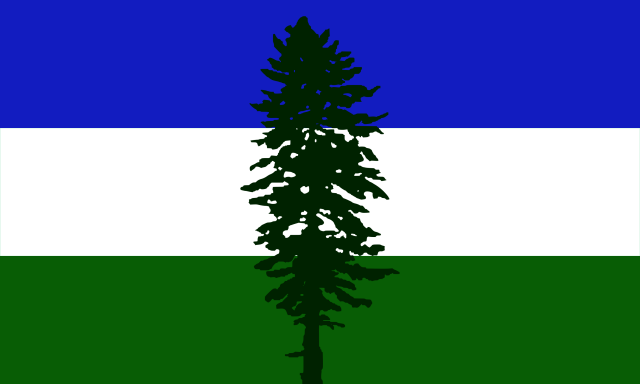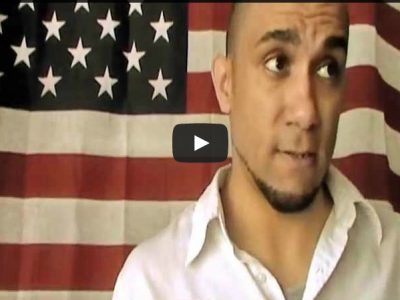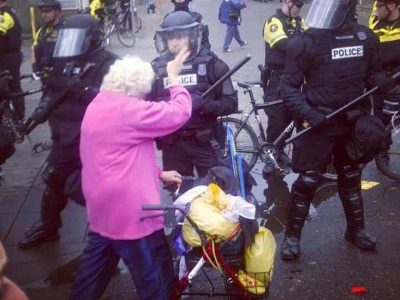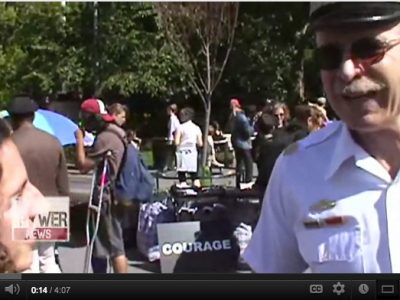By Alexander Baretich
I designed the Cascadian flag, aka the Doug, way back in the mid 1990s when I was a graduate student studying in Eastern Europe. Though I totally love the people, cultures and landscape of Eastern Europe, I was deeply homesick for the forests of Cascadia, specifically the Willamette Valley forests I grew up around. One day as I sat on a hill with my companion, I had this vision of a flag where the Cascadian landscape came to mind. Prior to the design and its popularity, the idea of Cascadia–specifically the bioregion–was pretty much an abstract concept reserved for radical geographers and hip sociologists. The flag conveys something far more tangible than an abstract concept of demarcation of space; the flag captures that love of living communities in our bioregion. Unlike many flags, this is not a flag of blood, nor of the glory of a nation, but a love of the bioregion; our ecological family and its natural boundaries; the place in which we live and love.The blue represents the moisture rich sky above, the Pacific ocean, along with the Salish Sea, lakes, rivers, and other inland waters. Our home is of continuous cascading waters flowing from our sky and mountains back to the Pacific. For Cascadia is a land of falling water from the Pacific to the western slopes of the Rockies where water cycles as vapor and then rain and snow to run through creek and river back to the Pacific. The white is for the snow and clouds which are the catalyst of water changing from one state of matter to another. From liquid into vapor in the form of mist and clouds. From vapor into solid in the form of ice and snow, then melting back to liquid or vapor. The green is the forests and fields which also carry life giving water through our biodiverse land. The lone standing Douglas Fir symbolizes endurance, defiance and resilience against fire, flood, catastrophic change and even against the anthropocentric Man. All these symbols of color and images come together to symbolize what being Cascadian is all about.
Cascadia can be defined by the great hydrologic cycle in what is described as the Northeast Pacific. As a natural demarcation of the bioregion of Cascadia, that cycle begins with the evaporation of water from the Pacific. That ocean water is then transformed into water vapor, taking form as mist, fog and clouds. The water then falls as rain, ice and snow as far east as the western slopes of the Rockies. For it is the waters west of the Rockies that drain back into the Pacific. The Pacific Ocean is the nursery of the water-life cycle. The Cascades, the Olympics, the coast range and the Columbia mountains are the catalyst for transformation. The Rockies are the eastern stony palisades, the floodgates, keeping the realm of falling water in Cascadia. That water-life gradually returns to the Pacific in shifting states of H2O as glacier melt, stream, creek and river, as well as life itself. Ultimately the great hydrologic cycle is the water-life. The water sustains life, as well as flows through life in constant movement through our veins, phloem, food web and riparian systems. In essence, to be Cascadian is to be Cascadia. To be Cascadia is to be aware of the interconnectedness of that flow of energy, of transference of the water-life cycle. It is to be conscious and to respect all parts that make the whole in a cycle that flows through all parts.
So what is bioregionalism? Bioregionalism is the consciousness or awareness of the interconnectedness of the water-life cycle within a given region. Even in the driest of deserts, a bioregion is defined by its water-life cycle, no matter how short and seemingly sparse a cycle it may be. The great water-life cycles are actually the generation and transfer of energy. So each bioregion is a living system of interconnected communities and churning of energy. Tao philosophy ascribes the flow energy in the body and systems to Ch’i, often translated in English as life force. The water-life (within great water-life cycles) is like the Ch’i within the biomass of the Earth. It is a flow of energy and, as living beings dependent on these life cycles, it is crucial we sustain, maintain and preserve these cycles in healthy ways. As bioregionalists awakened to the acknowledgment of the importance of these cycles and regions of the Earth, it becomes part of who and what we are. The bioregion permeates the very soul of the awakened inhabitant (i.e. the bioregionalist). Hence, a bioregionalist is one that advocates for the awakening in consciousness and the protection of the water-life cycle.
A Cascadian Bioregionalist is one that is awakened or awakening to the living systems around us in Cascadia and sees that what is inflicted on the bioregion (mercury poisoning, radiation be it Hanford or Fukushima, deforestation, pesticides, GMO crops, suburban blight, Wal-martization….) is inherently inflicted on the self. It means that an exploitation of the bioregion is an exploitation of the self. It means that activism is not just something you do to save a panda on the other side of the planet–bioregional activism is personal. Bioregionalism is also empowerment of the local. Ideally, that empowerment is horizontal and inclusive to all communities (human and Natural). We as bioregionalists do not live in isolated realms, but in interconnected and interwoven communities where the local is the focal point.
The flag is a nonverbal statement of “THIS IS CASCADIA & WE ARE CASCADIAN!”
Free Cascadia and Kloshe Nanitch








2 comments for “Symbolism of the Cascadian Flag”